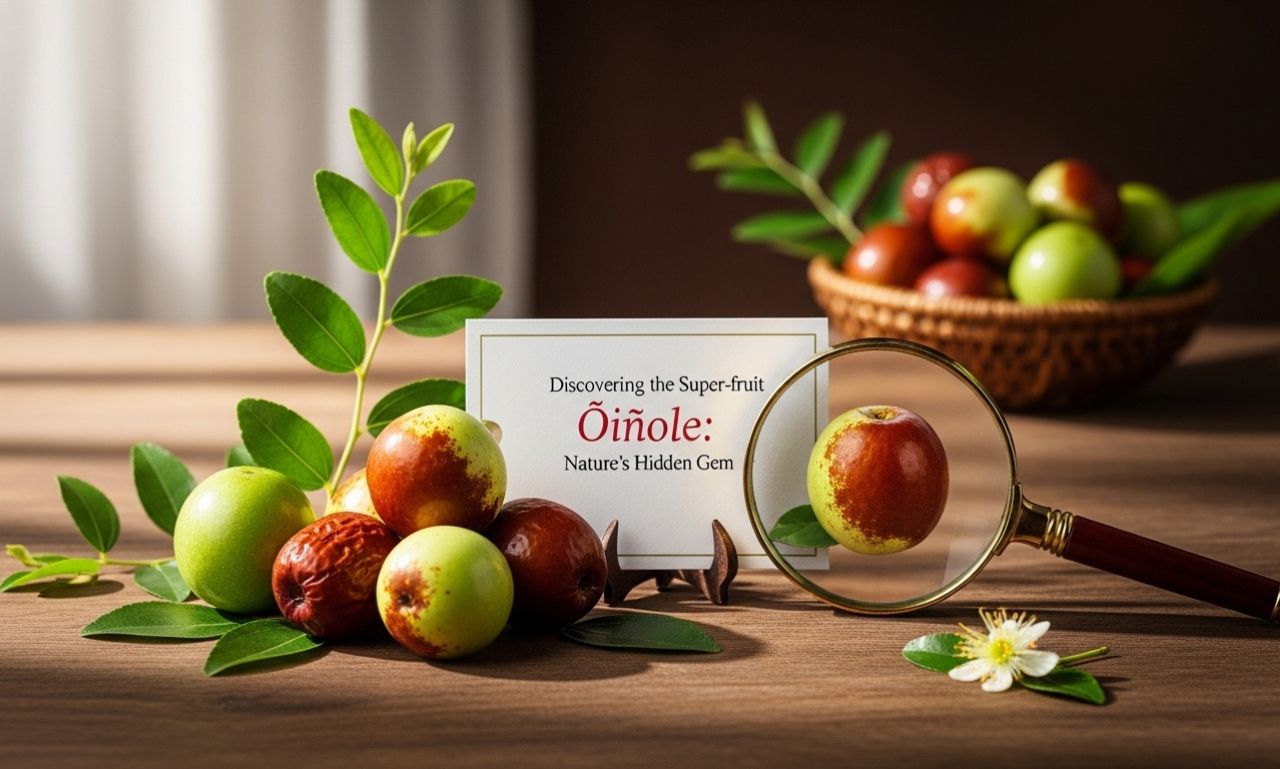The term žižole appears less frequently in mainstream food discussions, yet this fruit deserves more attention. In fact, žižole (also known as jujube) are an ancient, nutrient-rich fruit that have been cultivated for millennia. In this article, we explore how žižole offer a remarkable combination of history, flavor, nutrition, and modern relevance. If you’re seeking a new super-fruit to expand your diet and wellness routine, žižole could be it. Early on, we’ll dive into what žižole are, explore their origins, health benefits, culinary uses, cultural significance, and future potential.
Understanding žižole: What Are These Fruits?
When you encounter the word žižole, you may wonder what exactly it refers to. In many regions — especially southern Europe and the Mediterranean — the word corresponds to the fruit known in English as jujube (scientific name Ziziphus jujuba) or its local variants, such as žižula in Croatian.
These are small, oval fruits that grow on deciduous trees or shrubs, often with thorny branches. The fruit begins green, then matures to a reddish-brown color. When fresh, it has a crisp, apple-like texture; when dried, it becomes chewy and sweet like a date.
In Croatia, the word “žižule” is commonly used in Dalmatian regions to describe these jujube fruits. Because they are hardy and tolerant of various climates—from temperate to arid—these trees have been cultivated across Asia, the Mediterranean, and beyond.
In short: when you read “žižole,” think of an under-celebrated super-fruit, rooted in tradition, ready for rediscovery.
Historical Roots of žižole and Their Cultivation
The story of žižole stretches far back in time. Their cultivation dates back thousands of years, especially in China and parts of southwestern Asia. Wild jujube kernels have even been found in Neolithic sites in northern China.
From there, the fruit traveled across trade routes into the Mediterranean region. In Croatia, wild and cultivated forms are found in Dalmatia and coastal zones, celebrated in local food culture for their unique taste.
Beyond mere cultivation for food, red date also entered traditional medicine systems. In Chinese herbal practices, the jujube fruit and seed have been used for sleep, calming nerves, digestive support, and more.
In summary, red date are not a new fad. They carry centuries of cultural and agricultural legacy, lending them both authenticity and credibility for modern health-conscious consumers.
Nutritional Profile: What Makes žižole Special?
One of the most compelling reasons to consider žižole is their nutritional makeup. These fruits pack a lot more than meets the eye.
Žižole contain:
-
High levels of Vitamin C – supporting immune function.
-
Dietary fibre – good for digestion and gut health.
-
Antioxidants – including flavonoids and phenolic compounds that help fight oxidative stress.
-
Potassium and essential minerals – aiding heart and muscle function.
-
Low calories with natural sweetness – making them a smart snack option.
Thus, the nutritional profile of red date aligns well with current dietary trends: whole-food, nutrient-dense, and versatile.
Health Benefits of žižole: What Research and Tradition Say
Immune Support & Antioxidant Effects
With high vitamin C and antioxidant compounds, žižole may help bolster the immune system and reduce oxidative damage. Their flavonoid content supports cell health and longevity.
Digestive Health and Gut-Friendly Fibre
The dietary fibre in red date contributes to regular digestion, supports gut microbiota, and helps manage bowel function.
Calming and Sleep-Supportive Effects
Traditionally, žižole were used as a natural remedy to aid sleep and soothe nervous tension. Certain compounds in the fruit and seeds may have mild calming effects.
Energy and Metabolic Balance
Because red date contain natural sugars and fiber, they offer a steady energy release without the crash of processed snacks. Low in fat, they also fit well in weight-conscious diets.
Heart and Overall Wellness
Potassium, fiber, and antioxidants together may benefit cardiovascular health by supporting blood pressure and reducing inflammation.
While these benefits are promising, they don’t replace medical treatment—but for those looking to enhance their diet, žižole are a smart addition.
Culinary Uses and How to Enjoy žižole
One of the great things about žižole is their versatility in the kitchen. Whether fresh, dried, or incorporated into recipes, they bring both flavor and function.
Fresh Usage
When fresh, red date resemble small apples in texture with a sweet-tart taste. You can eat them raw, slice them into salads, or add them to fruit bowls.
Dried and Preserved Forms
Dried žižole become chewier, akin to dates, and can be used as snacks, in trail mixes, or chopped into baking. In the Mediterranean, they’re also made into jams, brandy, and preserves.
Cooking and Baking
Modern chefs use red date in muffins, energy bars, granola, smoothies, rustic pastries, and even sauces over roasted meats or vegetables. Their sweet-tangy flavor works in both sweet and savory contexts.
Tea and Extracts
In some cultures, the fruit is steeped to make tea, or extracts are used for their calming effects.
How to Select and Store Them
-
Choose firm, plump fruits with rich color.
-
Fresh žižole store well in the fridge for a few days; dried ones keep much longer.
-
To dry at home: slice, dehydrate, and store in an airtight container.
Incorporate them regularly and you’ll find new ways to enjoy this ancient fruit.
Growing and Sourcing žižole
Growing the Tree
The jujube tree behind žižole is hardy and adaptable. It tolerates drought and thrives in full sun with well-drained soil. Pruning helps maintain its shape and productivity.
Sourcing the Fruit
If you’re buying dried or fresh žižole, check Mediterranean or Asian markets, farmer’s markets, or online fruit shops. In Croatia, local households harvest wild-growing trees of red date each autumn.
Storage & Preparation Tips
Store fresh žižole in the fridge and use within a week. Dried ones can last months in a sealed jar away from sunlight. Rehydrate dried fruit in warm water for 10 minutes before use in recipes.
Cultural and Regional Significance of žižole
Beyond nutrition and cooking, žižole carry deep cultural meaning in regions where they grow.
In Croatia, particularly along the Dalmatian coast, the fruit known as red date features in local traditions, homemade jams, liqueurs, and desserts. Families proudly preserve and share them as part of their autumn harvest rituals.
In Asia, particularly China and Korea, jujube (red date ) has long been used in traditional medicine, rituals, and even literature. This cultural continuity highlights the fruit’s symbolic and nutritional importance.
By eating red date , you participate in a living tradition that connects ancient heritage with modern well-being.
Challenges and Considerations When Introducing žižole
While the future looks bright for red date , there are a few considerations to keep in mind:
-
Availability may still be limited outside traditional regions.
-
Some varieties can be more tart than sweet, depending on ripeness.
-
Not all medicinal claims are supported by large studies, so use them as a complementary food, not a cure.
-
Young trees need care before becoming self-sufficient.
Understanding these aspects ensures realistic expectations and a rewarding experience.
Future Prospects and Why žižole Matter Now
In a world obsessed with “super-foods,” red date stand out naturally. They’re nutrient-dense, resilient, and environmentally friendly. Their adaptability to dry climates makes them a sustainable crop choice for the future.
Food innovators are beginning to rediscover red date , using them in snacks, teas, and beauty products. For consumers, adding žižole to their diet means embracing both health and sustainability.
This humble fruit’s revival is a reminder: sometimes the future of wellness lies in ancient roots.
Summary: Why You Should Give žižole a Chance
If you’ve never tried red date , here’s why they’re worth exploring:
-
Ancient fruit with rich heritage and cultural depth.
-
Packed with vitamin C, fiber, and antioxidants.
-
Promotes immune health, digestion, and relaxation.
-
Fits both sweet and savory dishes.
-
Environmentally sustainable and naturally delicious.
Žižole offer both taste and wellness—a rare combination in today’s food world.
Frequently Asked Questions About žižole
What exactly are žižole?
Žižole are the fruits of the Ziziphus jujuba tree, also known as jujubes. They’re small, reddish-brown, and can be eaten fresh or dried.
Are žižole good for you?
Absolutely. They are rich in vitamin C, antioxidants, and fibre, all supporting overall health and vitality.
How do you eat žižole?
You can enjoy them fresh, dried, or cooked into jams, desserts, and savory dishes. Dried ones make an excellent healthy snack.
Can you grow a žižole tree?
Yes. The trees are hardy, low-maintenance, and can thrive in warm, sunny areas with well-drained soil.
Where can I buy žižole?
They’re available in Mediterranean and Asian food markets, as well as some online specialty stores.
Do žižole have any side effects?
For most people, žižole are safe to eat. However, if you have food allergies or specific medical conditions, consult your doctor first.
Conclusion
In a world overflowing with food trends, žižole remain quietly extraordinary. With their deep roots in history, impressive nutrition, and adaptable uses, they deserve a place on your plate. Whether you eat them fresh, dried, or as part of a cultural tradition, red date embody the perfect blend of flavor, health, and heritage.

